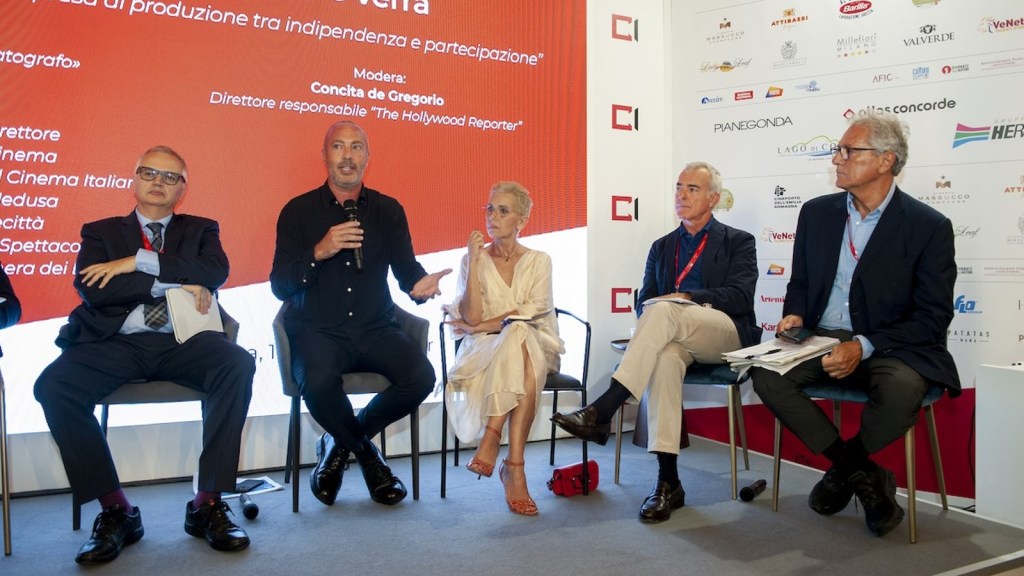The Italian film and television industry could step into the gap left by the dual Hollywood strikes, leading industry executives said at a panel at the Venice Film Festival on Saturday.
“If supply decreases with Hollywood on strike, we need to be ready with our products for the international market as well,” said Francesco Rutelli, president of the Italian national audiovisual association Anica, speaking at a panel moderated by THR Roma editor-in-chief Concita De Gregorio.
“We need to interpret market changes in real-time. And we need the government to issue certain rules with respect to these changes. It’s not a matter of changing the system’s regulations, but of adjusting them quickly to the changed and rapid changes taking place.”
Maria Pia Ammirati director of Rai Fiction, a division of Italy’s national public broadcaster, noted that since the beginning of 2023, international sales of Italian content has jumped 43 percent compared to last year.
Nicola Maccanico, CEO of legendary Rome studio Cinecittà said the Italian industry “has returned to the levels of the 1960s” when Rome was referred to as “Hollywood on the Tiber” and that the time has come for local filmmakers to “conquer the world market.”
But Giampaolo Letta, vice chairman and CEO of Italian production and distribution giant Medusa noted that the Italian film industry faces major challenges at the moment, with rising costs and reduced investment putting pressure on budgets.
“The next few months will be difficult for the industry: Costs to make films have increased by as much as 30 percent, Italian titles struggling to gain a foothold in theaters, there is less investment and therefore a lower appetite for risk,” he said.
The panel had the numbers to back up the claim. The cost-per-minute for high-end series has dropped by half in just four years, from €113,754 ($122,800) per minute for Pablo Sorrentino’s The New Pope and €106,337 ($114,800) for Luca Guadagnino’s We are Who We Are, both for Sky and HBO, down to €55,393 ($59,800) per minute for Giancarlo Fontana and Giuseppe Stasi’s The Bad Guy, an Amazon Prime production, and €61,445 ($66,350) for Edoardo De Angelis’ Netflix series The Lying Lives of Adults.
Benedetto Habib, president of the ANICA Producers Union, noted that on the level of creativity “we are competitive” but that Italian producers need the “economic resources necessary to compete in both the European and international contexts.”
But “the challenge is not just a question of budgets,” said Letta, “more than budget it is a question of quality, of creativity. We also welcome foreign investment, but we all have to play by the same rules, including Italian independent producers.”
There were only 20 Italian films made in 2023 with budgets over €6 million ($6.5 million), including Venice Saverio Costanzo’s Venice competition entry Finally Dawn and Edoardo de Angelis’ festival opener Comandante. Of those 20, only two —Paola Cortellesi’s C’è ancora domani and Alice Rohrwacher’s La Chimera, were directed by women, and only two, C’è ancora domani and Finally Dawn, featured female leads.
The panel stressed the need to protect local production in order to continue, as Paolo del Brocco, CEO of Rai Cinema, a division of Italian public broadcaster put it, “to tell the story of our country.” All the panelists called for more solidarity and cooperation between independent producers.
“No one wins alone,” said Del Brocco.




